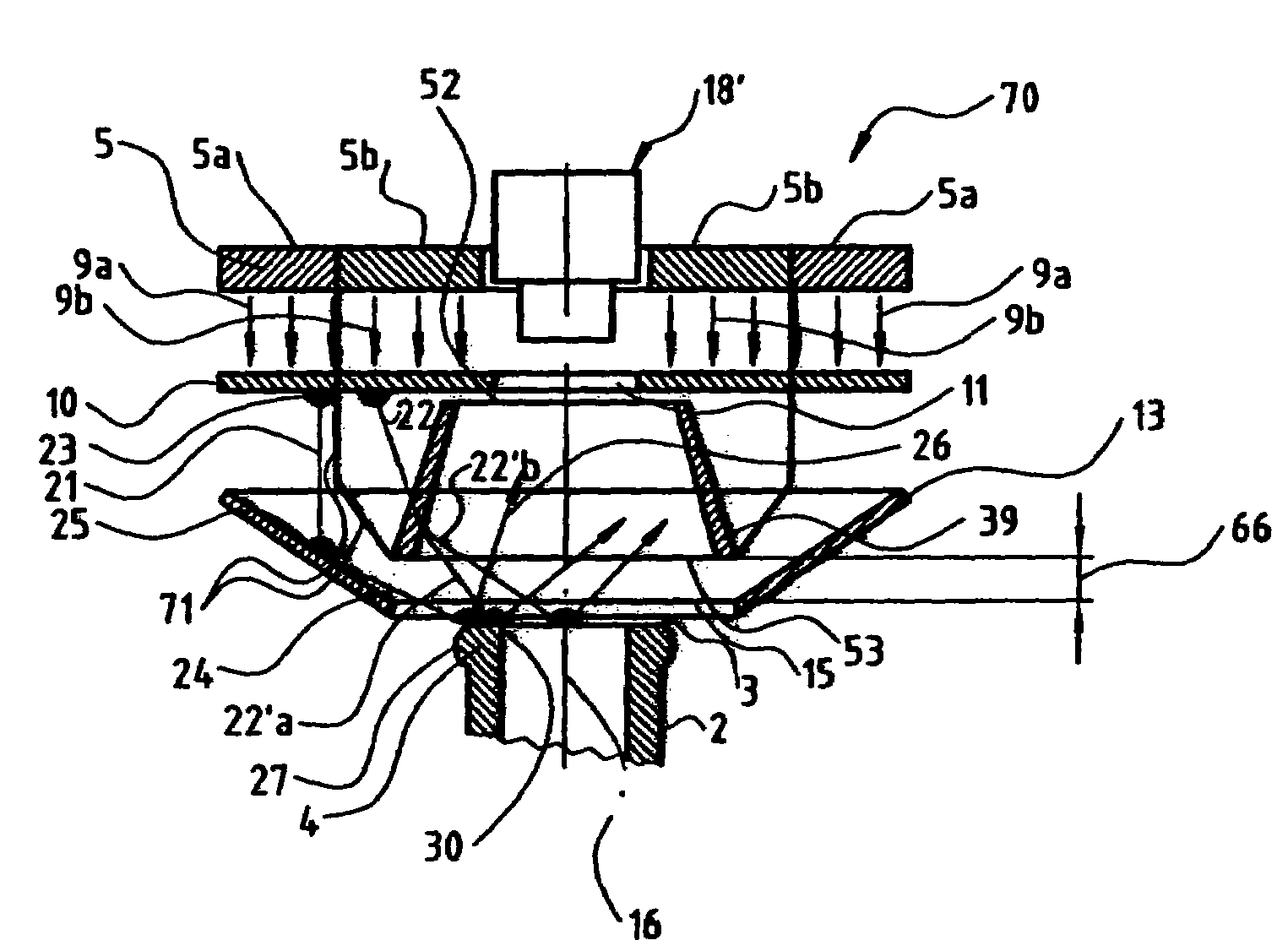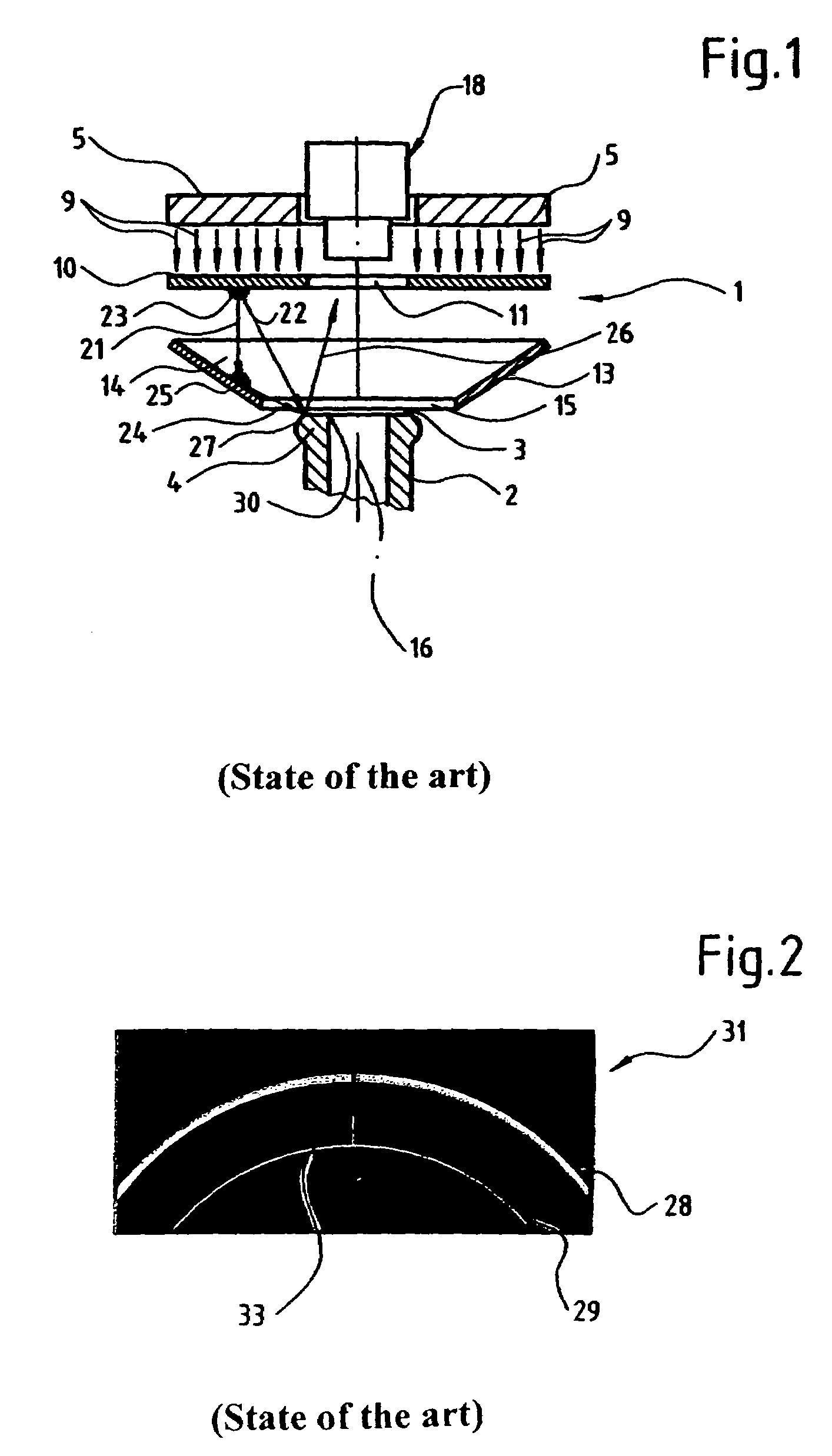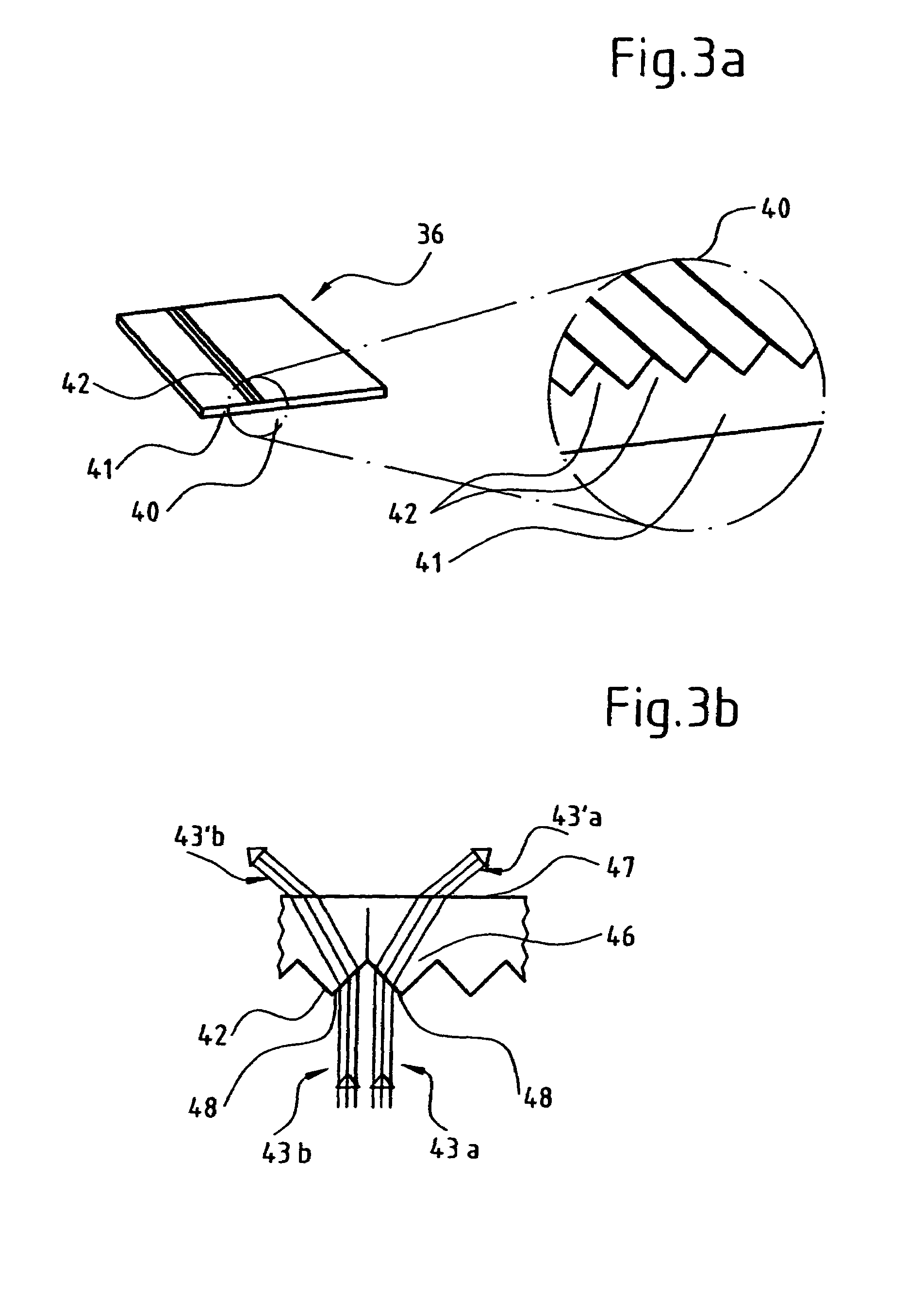Method and device for examining a sealing surface of a container mouth
a technology of sealing surface and container, which is applied in the direction of instrumentation, structural/machine measurement, sorting, etc., can solve the problems of series of defects in the sealing surface of the bottle mouth, a risk for consumers drinking from the bottle, and the sealing surface includes nicks, orange peel or even other defects, so as to achieve a wide range of contrast
- Summary
- Abstract
- Description
- Claims
- Application Information
AI Technical Summary
Benefits of technology
Problems solved by technology
Method used
Image
Examples
Embodiment Construction
[0050]FIG. 3a illustrates a line splitter film 36, as can be used as a component of an optical deflecting element 38 or 39 described hereinunder. As shown in particular in an enlarged section 40, the line splitter film 36 comprises a planar base 41. One side of the base 41 is occupied completely by parallel prism strips 42 (not all of which are illustrated) which directly adjoin one another. The prism strips 42 are elongated prisms consisting of translucent material. As shown in FIG. 3b, light beams which are aligned perpendicularly with a smooth underside 47 of the line splitter film 36 and impinge upon lateral surfaces 48 of the prism strips 42 are broken. The broken light beams pass through the prism base 46 to the smooth underside 47 of the line splitter film 36 and are broken once again at this location. By reason of the effect of the corresponding prism strip 42 the light beams 43a produce the light beams 43′a and the light beams 43b produce the light beams 43′b. In FIG. 3b, l...
PUM
| Property | Measurement | Unit |
|---|---|---|
| reflected beam opening angle | aaaaa | aaaaa |
| angle | aaaaa | aaaaa |
| transparent | aaaaa | aaaaa |
Abstract
Description
Claims
Application Information
 Login to View More
Login to View More - R&D
- Intellectual Property
- Life Sciences
- Materials
- Tech Scout
- Unparalleled Data Quality
- Higher Quality Content
- 60% Fewer Hallucinations
Browse by: Latest US Patents, China's latest patents, Technical Efficacy Thesaurus, Application Domain, Technology Topic, Popular Technical Reports.
© 2025 PatSnap. All rights reserved.Legal|Privacy policy|Modern Slavery Act Transparency Statement|Sitemap|About US| Contact US: help@patsnap.com



